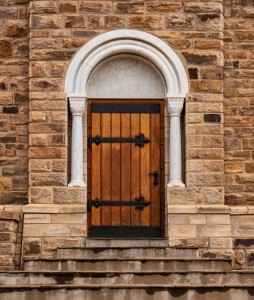Learn About the Different Types of Stone Masonry
Rubble Masonry
Rubble masonry uses undressed or roughly dressed stones of different sizes that are laid out with mortar that is not a uniform thickness. Within this category, options are typically classified as random rubble or squared rubble:
- Random Rubble Masonry: The un-coursed style of random rubble is often the most inexpensive style of masonry, as it uses a wide variety of stone sizes. The coursed version of random rubble uses stones of roughly equal height that are hammer dressed. This style of masonry is often used for low-height residential buildings and boundary walls.
- Squared Rubble Masonry: This style uses stones that have been squared on all joints and beds by either hammer or chisel dressings. This process is completed before laying. An un-coursed variation lays out the stones in differing styles, while a coursed squared rubble lays out the stones in equal sizes with uniform joints. These styles are ideal for both residential and commercial construction projects that are in hilly areas.

Ashlar Masonry
Unlike the varieties of rubble masonry, ashlar-style masonry requires uniform joints paired with finely dressed stones. While typically more expensive than rubble, ashlar styles are suitable for complex structures, like bridges and buildings. Within ashlar masonry, there are many sub-categories:
- Ashlar Fine Masonry: For this option, each stone is fine-tooled to create completely uniform rectangular stones that have perfect joints on all sides. While this option is more costly and requires extensive labor, it can obtain a highly satisfactory bond.
- Rough-Tooled Ashlar Masonry: Similar to its fine-tooled counterpart, the beds and sides are finely tooled to create even joints. However, the faces of the stones are roughly chiseled to produce an interesting texture.
- Quarry-Faced Ashlar Masonry: This style chisels a strip around the perimeter of each stone to create an even joint. What sets it apart is the rough face of the stone, giving it a natural look that mimics how the stones would appear in a quarry.
These are just a few of the many striking styles of stone masonry used in commercial, industrial, and historical buildings. At Soumar Masonry Restoration, Inc., we can restore any type of masonry with precision. If you need help bringing a historical or contemporary stone building to its optimal condition, request an estimate from our team today.
